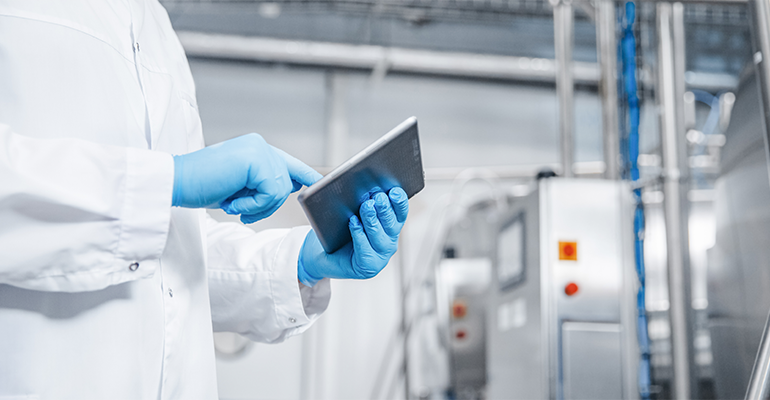News
Automation meets advanced technology to maximise food safety
6 Jun 2022
Food safety testing technologies such as automation and next-generation sequencing methods are instrumental to building industry transparency, consumer confidence and detecting foodborne outbreaks and infectious diseases.
There are various prevalent food safety technologies in today’s food safety industry.
Scientists, manufacturers, and companies can detect pathogens through screening that uses traditional methods for culturing while various techniques can detect nucleic acids and antibodies.

Food safety technology also identifies strains by using sequencing and next-generation sequencing (NGS) methods.
Detecting pathogens to ensure safe food consumption
Transparency is driving the use of food safety testing technologies. Consumers expect authenticity and full information-sharing related to all aspects of claims and the supply chain from their food products and brands.
Based in California, US, genomics testing company Clear Labs seeks to play a pivotal role in its use in the food industry with its turnkey genomic surveillance and diagnostics.
“Companies detect pathogens to ensure that their products are safe,” says Andrew Lin, senior scientist at Clear Labs. “Some products must be tested before release, which makes analysis time important so that supply chains are not disrupted while waiting for results,” Lin adds.
The Food Safety Modernization Act (FSMA), introduced by the US Food and Drug Administration (FDA), sets out to transform the food safety system in the US by moving its attention from responding to foodborne illnesses to preventing their emergence. The Act is also spearheading the implementation of reliable environmental monitoring programmes that may include the detection of pathogens or indicator organisms, Lin says.
Modern testing methods reduce false results
New methods in food safety testing are being used to improve the industry in a wide range of ways, Lin says. One of the aims of these new technologies is to reduce time; rapid analysis can reduce hold times for products that need to be tested before release. Increasing the number of samples tested at a time to achieve high throughput can also reduce analysis times. Ultimately, improvements to the time involved in testing food will lower costs.
Accuracy is another important feature of technologies for food safety testing today. Contemporary techniques can match sensitivity requirements as false-negative results can occur if samples are below the limit of detection for an assay. Consequently, false negatives would allow contaminated products to be released to the market.
Specificity is another key area, as false-positive results can cause economic loss due to destroying products that were not contaminated. Robustness is also paramount, with invalid results having the potential to cause economic loss and increased time to results if samples need to be re-tested, Lin says.
Overall, new testing techniques improve ease of use and create simplified systems. Complex analyses, on the other hand, are subject to user error and cost more in training time and hiring experts, Lin notes.
Strain level resolution is important for determining the scope of outbreaks, matching clinical, food and environmental isolates, determining virulence, tracking the movement of contaminants through a facility, and validating sanitation protocols by distinguishing resident versus transient microbial contaminations, Lin says.
Understanding and preventing foodborne outbreaks
Food safety testing technologies are vital in improving the response to foodborne outbreaks. “Improving the speed and accuracy of these lab tests will help ensure that contaminated foods are prevented from reaching the market,” says Lin. Sequencing can add more information such as lineage and serotype information to help in outbreak response, Lin continues.
Robotics and automation are valuable technologies to help make sequencing more readily adopted. Automated systems can perform many of the complicated tasks involved in sequencing, reducing the need for expertise, extensive training, and lab analysts’ time.
Marrying automation and NGS is a powerful combination to meet consumer and industry needs. “Simplifying the sequencing data analysis workflow is also important in making NGS more accessible, reducing the need for bioinformatics expertise,” says Lin. NGS generates millions of reads to detect multiple target genes for each pathogen. “The built-in redundancy ensures accuracy, reducing false-positive and false-negative results,” adds Lin.
How will testing technology evolve?
“Detection methods will become more sensitive, more rapid and cheaper,” says Lin.
Lin shares that sequencing will become more automated, requiring less training, expertise, and hands-on time. In addition, Lin expects that sequencing and bioinformatics databases will continue to expand, making sequencing analysis more and more accurate.
Food safety testing technologies increasingly play an important role in identifying and preventing infectious diseases.
“Improved detection of pathogens in food products can ensure that products are safe before being sold,” says Lin. The improved detection of pathogens and indicator organisms can also form part of an environmental monitoring program to ensure that facilities minimise contamination risk and effective sanitation protocols.
Enhanced species, strain and serotype identification can also improve outbreak response by “quickly identifying suspect foods, routes of contamination, the scope of the outbreak, informing clinicians of treatments and determining virulence,” Lin concludes.
